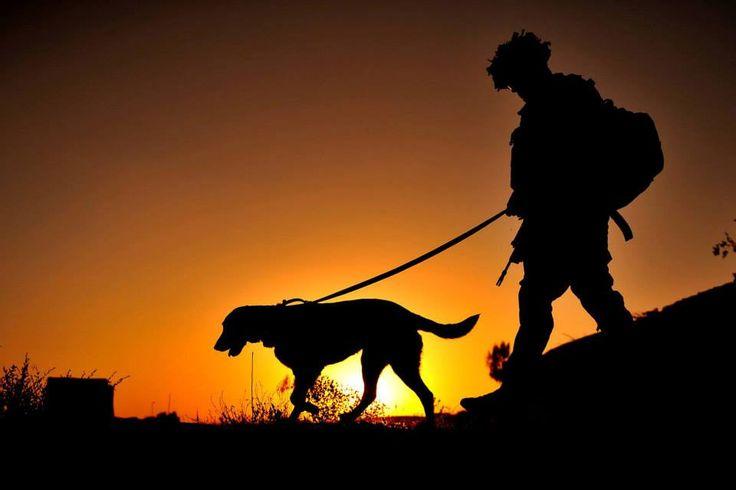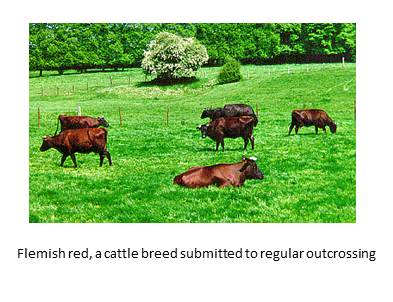Pride and crossbreeding
I take here the opportunity of the recent (and excellent) posts of Katariina Mäki on crossbreeding, to give some personal insight on this burning issue. As underlined in a previous post, in dogs, pure breeding has been viewed as a paradigm, probably more than in any other domestic species. However, since the lack of genetic diversity (and behind it the fact that most registries are closed to crossbreeding) is considered as one of the most important causes of current health problems in dog, the crossbreeding issue is controversial, if not explosive. This can be illustrated by the recent debates around the integration of crossbreds within British Kennel Club programmes, which have been pointed out as the reason of the replacement of its Chairman.
It is important to state that, if rarely applied, crossbreeding is theoretically not banned from official cynophilia, even once a breed is recognized. First, FCI encourages, in theory, crosses between closely related breeds and breed varieties. In France, in Braque Saint-Germain for instance, there are still official outcrossing with English Pointer implemented by the club. In a survey in 2001, Dumortier (2002) indicated that 41% of French breed clubs reported that some outcrosses had occurred in their breeds. In USA, Farrel et al. (2015) described the outcross made in Dalmatian with a Pointer to improve the health status of the breed relative to hyperuricosuria. Yet, in 2011, even 13 generations after the cross, acceptance of the registration of the products as Dalmatian was still not accepted by some breeders.
Among National Kennel Clubs, the Finnish KC is probably the most proactive in relation to the issue, with specific instructions for crossbreeding implementation approved in 2013 (see the different posts of Katariina Mäki on the topic). Those instructions aim to provide some guidelines, in relation to the reason why crossbreeding should be implemented, breeds and individuals to be chosen, number of litters to be produced, and following of the mating plan. One can argue that those instructions just provide general principles, and remain rather vague for practical implementations. Yet, given the absence of practical and theoretical studies assessing how to implement efficient breeding crossbreeding plans, it is already great to have such principles. Also their different programmes may constitute interesting practical cases for the future.
Lack of knowledge is probably one of the reasons for the controversies. For a breeder, purebreeding is comforting, as s/he may, more or less, have a good idea of what the offspring will look like, what will be their behavior, potential health problems and so on… By contrast, crossbreeding can be viewed as a step into the unknown, and is a process that cannot be taken lightly… Also, crossbreeding with a given breed can be viewed as a strong political decision toward the orientation of breeding goals. Impacting a specific trait or reintroducing genetic diversity at a breed scale, through crossbreeding, requires much more than the use of one single sire to produce one or two litters. Therefore, the consequences on the genetic pool, and behind that, on the morphological, behavioral, and health features can be important.
It is therefore not always easy to find a compromise among actors involved, on the breed to be used, as well as the extent of the crossbreeding programme. An article of Lauvie et al. (2008) on Flemish Red rare cattle breed illustrates that even in other species, stakeholders may have divergent position about the opportunity to use crossbreeding. In dogs, one important question remains about who should decide the use of crossbreeding: e.g. national breed clubs or kennels clubs, country of origin, FCI?
More generally, there is an urgent need to have people working on the issue, providing practical recommendations and political guidelines for dog clubs and breeders.
References
- Dumortier E. (2002) Bilan de la diversite ethnique canine et des pratiques de gestion genetique dans les clubs de races canines en France. These Veterinaire. ENVA.
- Farrel L.L., Schoenebeck J.J., Wiener P., Clements D.N., Summers K.M. (2015) The challenges of pedigree dog health: approaches to combating inherited disease. Canine Genetics and Epidemiology. doi:10.1186/s40575-015-0014-9
- FCI (2012) Breeds and Varieties: Crosses. FCI Circular www.fci.be/medias/SCI-REG-CRO-RAC-VAR-613.pdf Accessed April, 24 2015.
- Lauvie A., Danchin-Burge C., Audiot A., Brives H., Casabianca F., Verrier E. (2008) A controversy about crossbreeding in a conservation programme: The case study of the Flemish Red cattle breed. Livestock Science 118: 113–122.
Credit picture: B. della Rovere AgroParisTech
 Donate
Donate



1 Comment
Recommended Comments